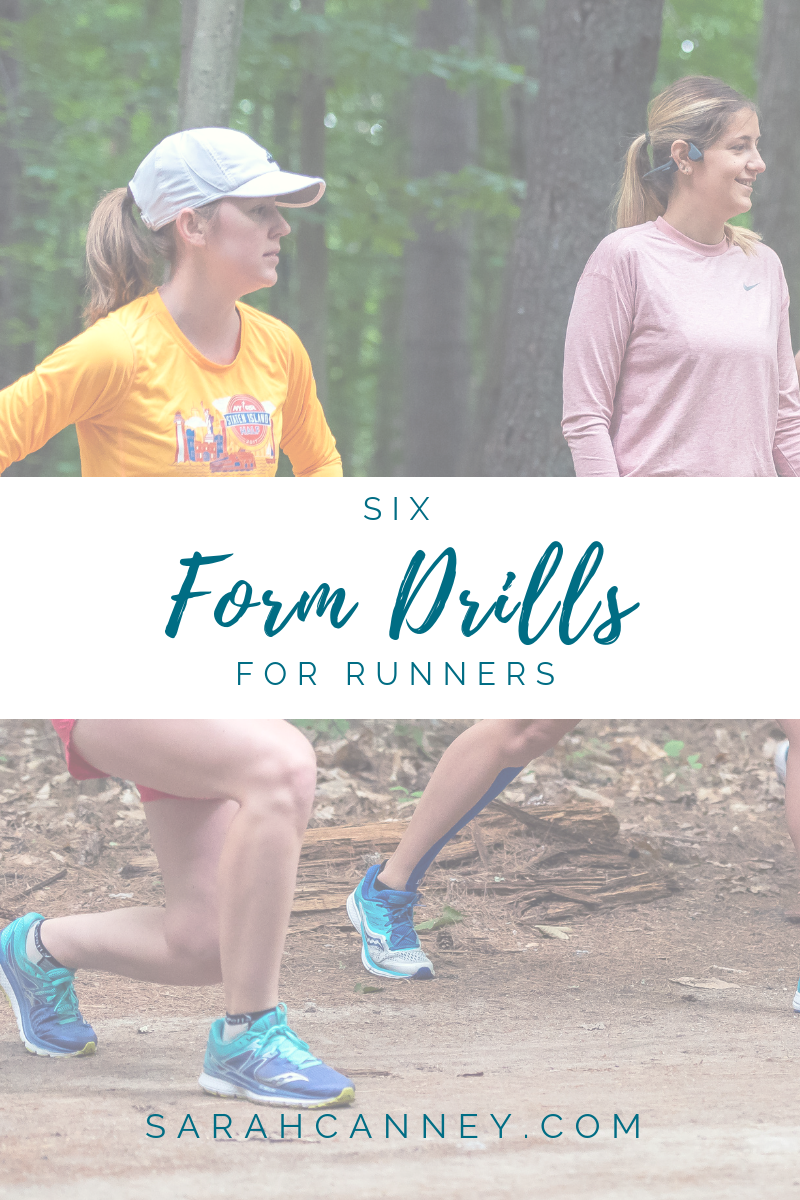6 Form Drills for Runners: training neuromuscular pathways for better running performance
Improving as a runner requires more than just running. I've talked frequently about the importance of strength training (HERE and HERE) as a way to prevent injury and increase overall strength, subsequently improving performance. Form drills are another way to improve running efficiency and speed without actually running. To understand why form drills are important you have to understand the brain-muscle connection or the neuromuscular pathway. The neuromuscular junction is the point at which an electrical impulse from the nervous system (your brain) is passed to the muscle. T
hese impulses signal the muscle fibers to fire and produce movement. Most of our daily movement is so familiar that these pathways are "well worn." But when we learn a new movement, these pathways can be somewhat "fuzzy." Take for example learning to ride a bicycle. A child just learning to ride a bicycle is unfamiliar with the movement; they are trying to coordinate their balance (core stability), with the motion of their legs on the pedals. The movement feels new and difficult because the brain-muscle connection has never been used in that way. However, as the child practices these movements the neuromuscular connections become more efficient and the child begins to acquire the proper balance and coordination necessary for riding a bicycle. The child adapts neurologically to perform the new skill.
The same is true of running. Running requires similar balance and coordination and when we repeat the motion in practice our body adapts neurologically and physically. Form drills take specific movements or complimentary movements from running, isolate them and "slow" them down so that they can be practiced at slower speeds. The isolation and slowing of the movement allow a runner to focus specifically on that particular movement and perform it properly. Often when we simply run, the weaknesses and imbalances of our body affect our form and gait. This is especially true of running while fatigued: everything begins to breakdown and as the form breaks down you become less efficient.
The repetition of form drills "beats down" the path of the brain-muscle connection so that execution of the movement becomes quicker and more efficient. Those "trained" connections can also aid a fatigued runner, so that they can maintain a more efficient form even when tired.
Form drills are for every runner, regardless of your pace. They are a simple and effective way to improve your economy and efficiency as a runner and they can also help prevent injury by addressing areas of weakness and imbalance. [Form drills are no replacement for physical therapy, please see a physical therapist if you are experiencing any injuries related to running.]
Here are a few common form drills that can be performed on a flat surface (a driveway, track or grassy field are suitable surfaces) usually for a distance of 50 yards or so. Perform the drill and then walk back to your starting point and repeat:
High Knees: High knees isn't necessarily a "knee lift," in fact focus more on the downward motion of the leg into the ground and imagine it popping or springing back up to waist height. Alternate legs quickly as you move forward.
Skipping: There are many variations of skipping you can perform, but a simple skip is suitable to start. Again focus on the downward motion of the driving leg as it propels you up and forward. Variations of the skip can include a "pawing" motion, this takes a little coordination to perform, so slow down the skip a bit and slightly paw the ground when the ball of your foot reaches the ground.
Grapevine: This drill is a lateral movement performed by crossing the feet in front of and then behind the other as you move to the side, creating a weaving motion.
Butt Kicks: As simple as it sounds: run forward with a short stride that allows you to "kick" your butt with your heel.
Toe Taps: Alternate tapping toes against the top of a step or box jump.
Foot Drills: There are six foot drills that are can be essential to the runner. There are six drills you can perform that include a toe walk, heel walk, backwards toe walk, walking on inverted feet (on the outside of the foot), walking on everted feet (on the inside of foot), walking with toes in and toes out. Read more about the reasoning behind the performing foot drills HERE.
You can find helpful videos of each of these drills HERE.
Are form drills part of your weekly running routine?
--Sarah
I love connecting with readers! You can contact me here:
Email: RunFarGirl [at] gmail [dot] com
Twitter:@Run_Far_Girl
Instagram: instagram.com/runfargirl
Facebook:Facebook.com/runfargirl262
Pinterest: pinterest.com/runfargirl
Daily Mile:dailymile.com/people/scanney
